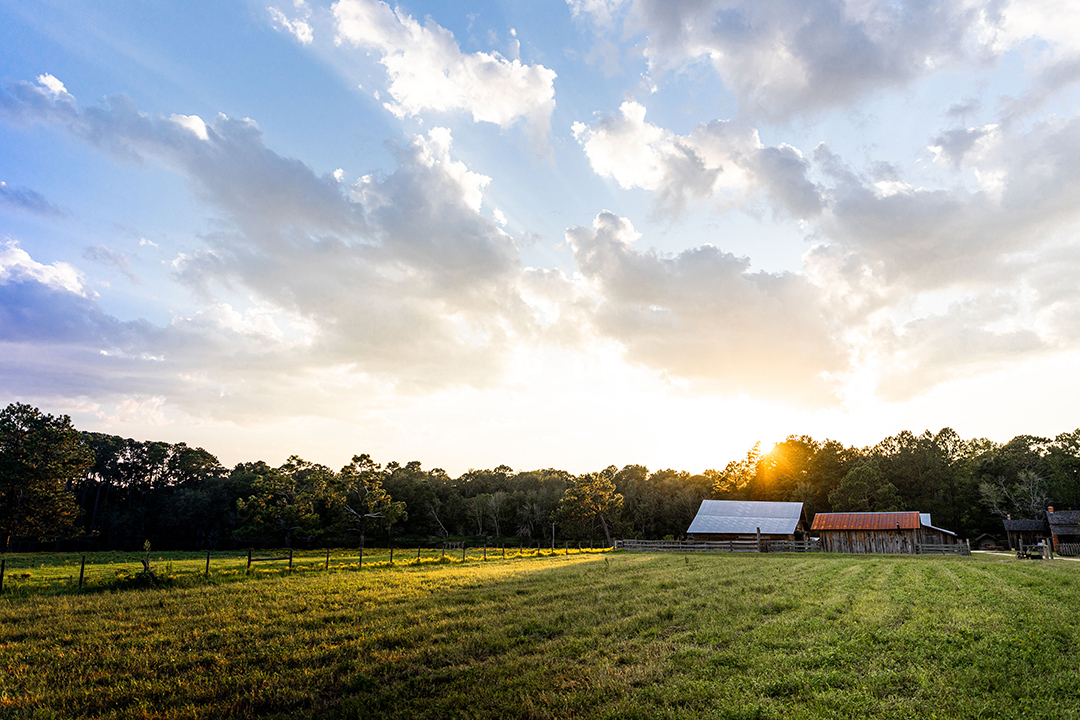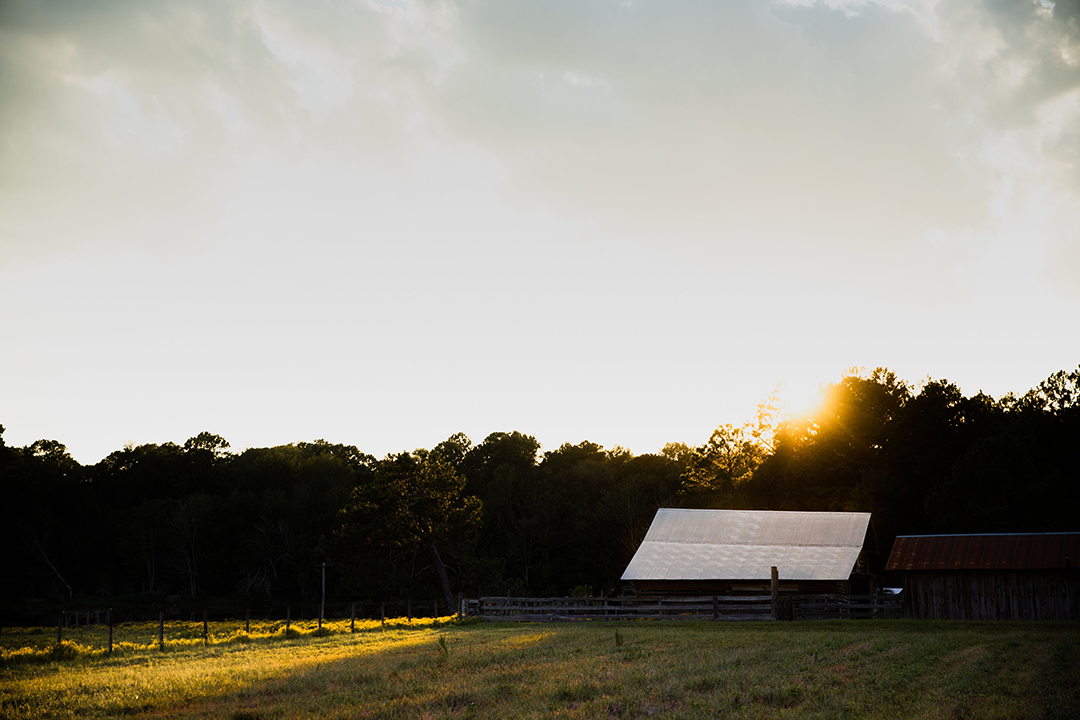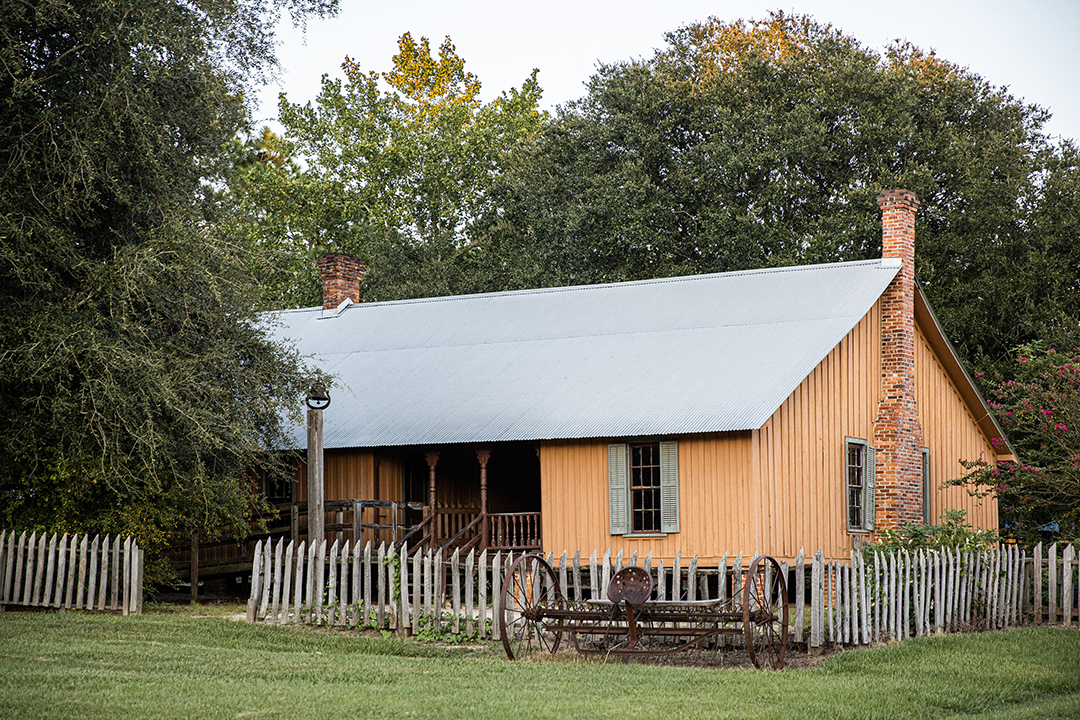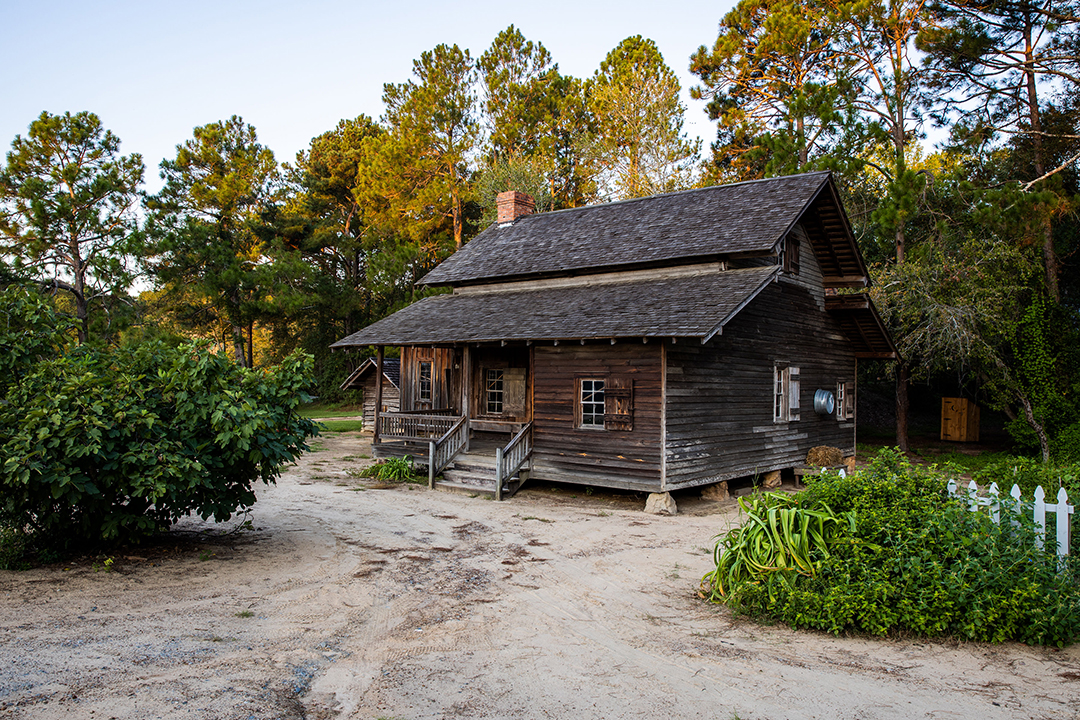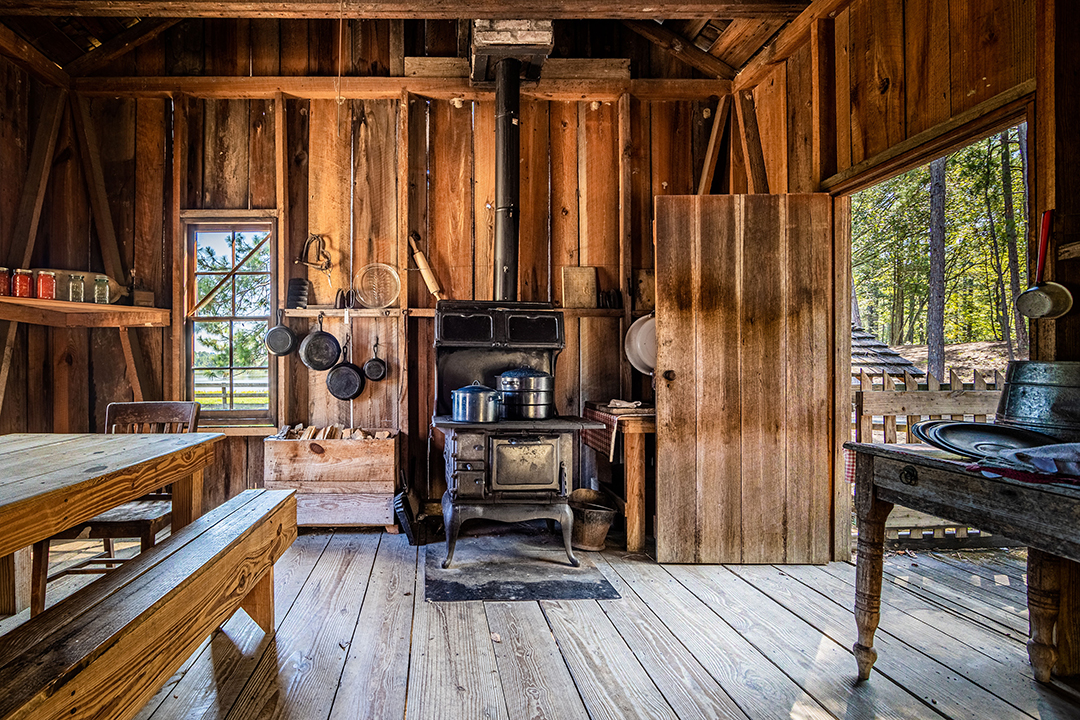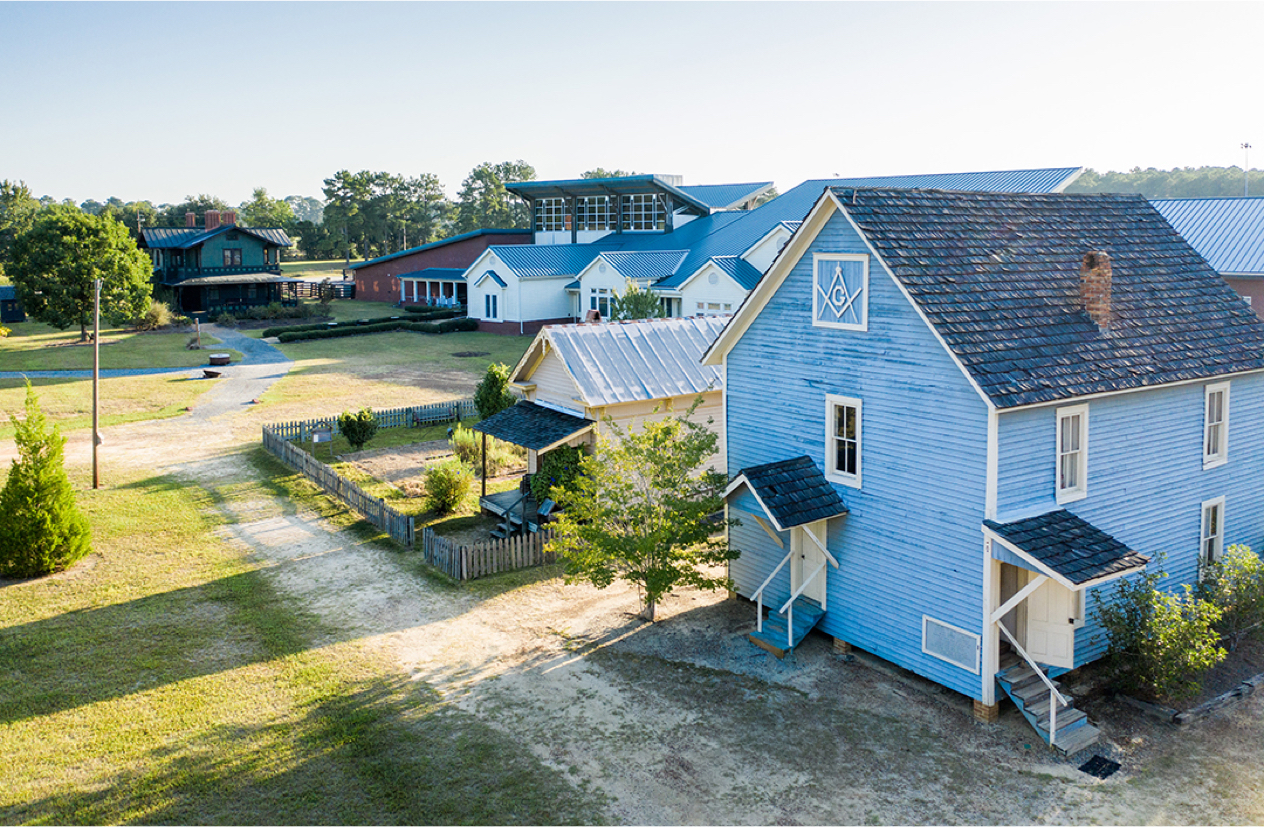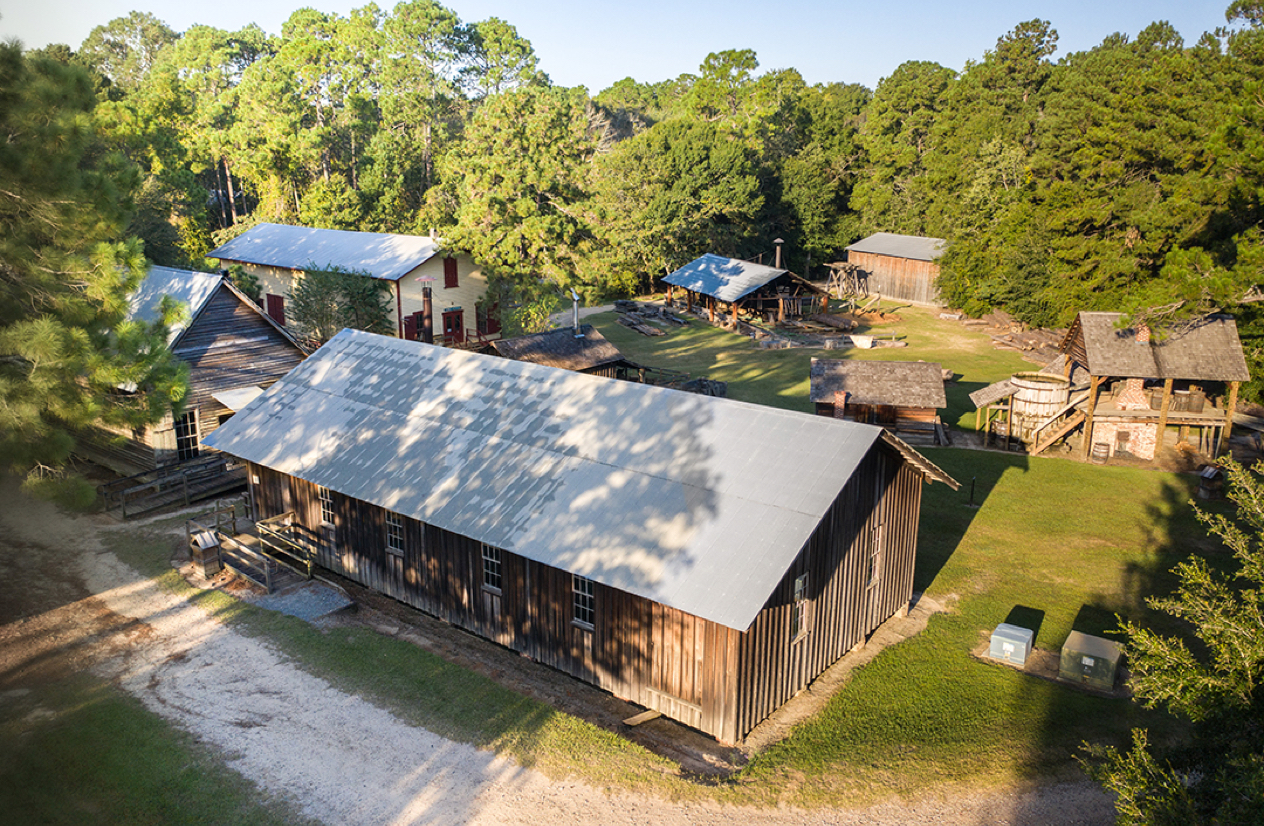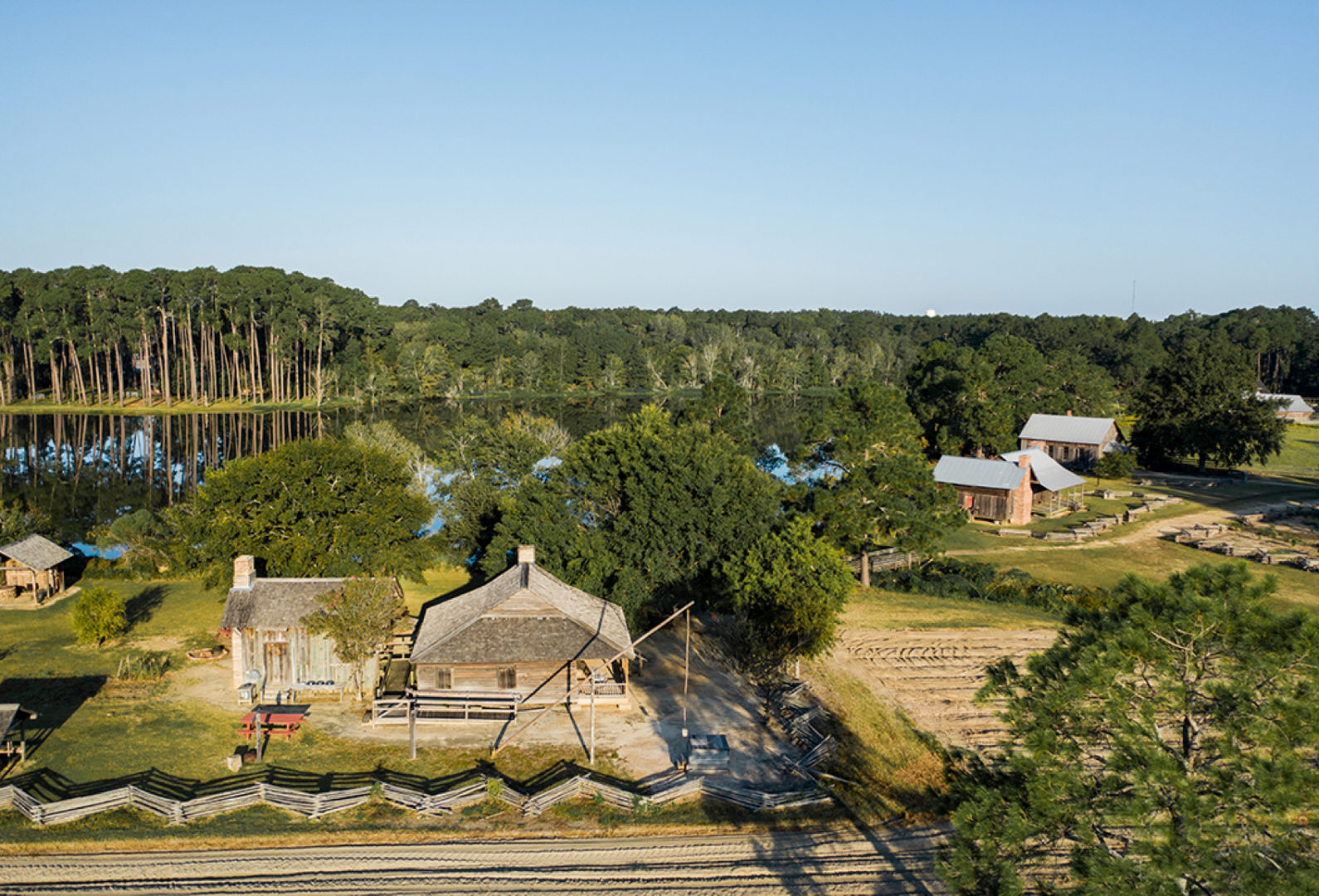The Gibbs Farm includes a barn, pens, buggy shed, and harness room. The farm buildings are arranged along the same basic layout of the original Allen Gibbs farm. The barn at the progressive farmstead is modeled after a Miller County “mule barn” built in 1889. The corn crib and harness room were built about 1880 on a farm near Lenox, Georgia and donated by John and Mona Darden. This restored structure seasonally holds ear corn and other feed and shelters tools and implements from the weather. The livestock kept on the farm are representative of the common farm animals of the time period. “Piney woods rooter” hogs, “native” sheep, goats, dairy cows, horses, and mules are the chief tenants of the barnyard (note: all animals are not represented at all times).
Guest Experiences May Include
Livestock husbandry and management; Industry and technology advancements, from household appliances to farm equipment that improved efficiency and/or comfort; Draft animal demonstrations; Processing animal byproduct and/or small crop demonstrations; Cooking demonstrations and classes; Gardening demonstrations and activities



